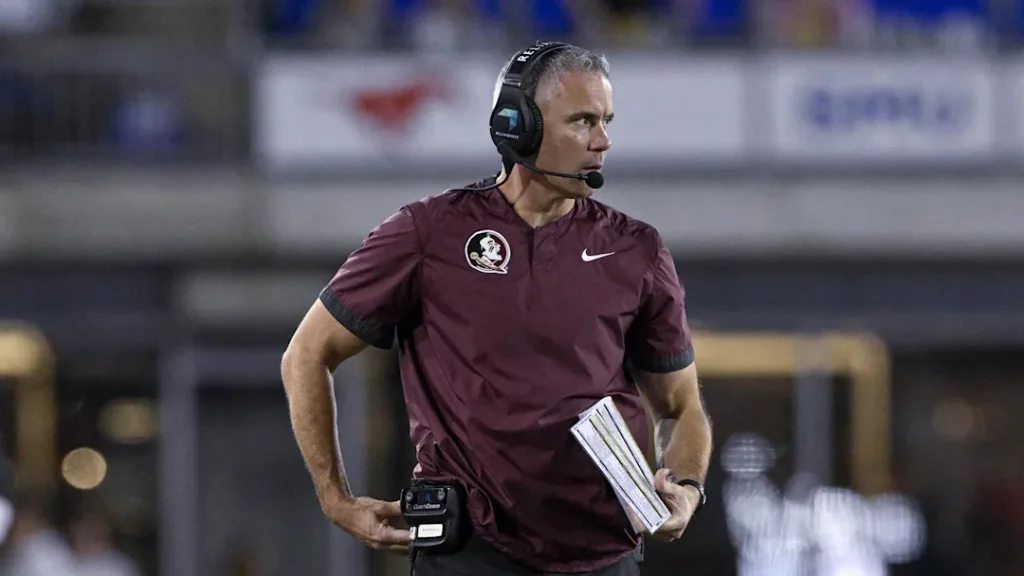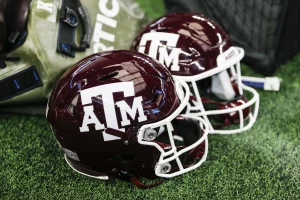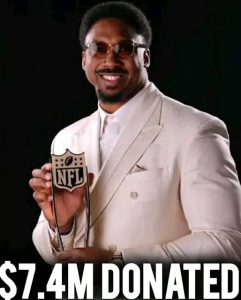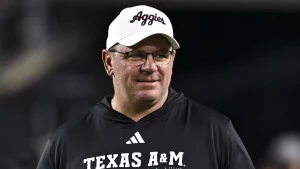
Florida State football’s resurgence has been one of the most compelling stories in college football over the past few seasons. After years of turmoil, internal upheaval, and coaching changes, head coach Mike Norvell helped return the Seminoles to a competitive level. However, for all of the program’s strides on the field, the battle for elite talent in the recruiting sphere remains fierce—and as of late, the Seminoles appear to be slipping behind in the race for one of their top 2025 targets.
The identity of the recruit—widely considered one of the best at his position—has become a focal point for Florida State’s 2025 class. A dynamic playmaker with elite upside, this prospect is the kind of addition that can turn a good recruiting class into a top-10 haul. But recent momentum swings suggest the Seminoles are now trailing multiple SEC and Big Ten powers for his commitment, leaving FSU fans and coaches increasingly anxious as the summer evaluation period heats up.
While Florida State has been in the conversation since early in the process—hosting the prospect for multiple visits, including an important junior day trip and an unofficial game weekend—other programs have surged forward with aggressive NIL packages, clearer depth chart opportunities, or simply stronger program momentum. That has placed FSU in an unenviable position: once the perceived favorite, the Seminoles now appear to be hanging on by a thread, hoping to claw their way back into the top tier of consideration.
There’s no sugarcoating what this could mean for Florida State. Losing a priority target of this caliber would be a setback—not just in the current cycle, but symbolically. In the ultra-competitive world of college football recruiting, optics matter. The elite programs stack talent year after year not only because of on-field results, but because perception fuels commitment. If high-profile recruits start to question whether FSU can develop them, elevate them, and maximize their exposure, it can create a ripple effect that impacts the entire class.
That’s particularly concerning given how volatile the recruiting landscape has become. With the rise of NIL, transfer portal flexibility, and early offers, recruiting is now a fluid game. Programs can lose long-standing commitments overnight, and no recruit is ever truly “locked in” until they sign a National Letter of Intent. Florida State’s staff knows this better than anyone—they’ve flipped blue-chip prospects from rival schools and also watched their own commits get poached in the eleventh hour.
The Seminoles’ recent struggles with offensive line recruiting further magnify the significance of this recruiting battle. While the program has improved its trench play in recent years, the depth and long-term development pipeline remains a concern. If the target in question is an offensive lineman, missing on him would not only hurt from a star-power standpoint—it would leave a glaring gap at a position where FSU needs to keep building.
Similarly, if the recruit is a skill position weapon—a wide receiver or defensive back, perhaps—it reflects another ongoing challenge for Florida State: holding onto the top playmakers in the Southeast. For years, FSU dominated in-state recruiting. Names like Jalen Ramsey, Dalvin Cook, and Derwin James all committed to the Garnet and Gold, turning into All-Americans and first-round picks. In recent cycles, however, the program has had to fend off competition from Georgia, Alabama, Ohio State, and even upstart ACC foes like Miami and Clemson. Being second or third in a top recruit’s list isn’t good enough, and that’s the reality Florida State is facing once again.
Even with some recent success stories—like flipping four-star running back Ousmane Kromah or landing a few high-upside defensive backs—the Seminoles have seen a noticeable decline in blue-chip ratios compared to recruiting titans. And the current race for this coveted prospect is only underscoring how difficult it is to consistently win battles against the biggest and most well-funded programs in the country.
It’s not entirely doom and gloom, however. Florida State’s coaching staff has shown resilience and adaptability. Assistant coaches like Alex Atkins and Patrick Surtain Sr. have developed strong reputations as recruiters and position coaches. The program’s facilities have improved. The NIL infrastructure, while perhaps not as flashy as others, is functional and growing. And most importantly, the Seminoles are winning again. They may not have reached the College Football Playoff in 2024, but they’ve become a top-15 program capable of competing with anyone on a given Saturday.
But there’s a difference between being relevant and being dominant, and this recruiting battle encapsulates that gap. Dominant programs don’t just get in the mix for elite players—they close. They convince five-star prospects to bet on their culture, their coaching, and their pathway to the NFL. Florida State has to prove it can finish the job, especially in a recruiting climate where relationships can shift in a matter of days and NIL valuations can rewrite commitment timelines overnight.
The concern isn’t that Florida State is being ignored—it’s that they’re no longer seen as the destination. Top recruits take the visits, post the photos, and show interest. But when decision day comes, more and more are choosing other logos. Some cite development. Others cite scheme fit. Increasingly, though, it’s about who can offer the most complete package: early playing time, national exposure, NFL readiness, and meaningful NIL opportunities.
In this particular case, the prospect’s camp has reportedly been impressed by another school’s presentation—both on the field and in the NIL realm. That school, a perennial SEC powerhouse, has a recent track record of putting players at the same position into the NFL early and often. They’ve made a hard push, and they may have the lead going into the final stretch of official visits.
For FSU, the path forward is clear but narrow. They must reassert their case with conviction and creativity. That means leveraging alumni connections. That means showcasing the real development numbers—snap counts, draft results, growth trajectories. That means outlining a plan that not only shows how the prospect will fit into the system but how they’ll be prioritized and featured early in their career. And yes, it means competing in the NIL space, even if it isn’t with the biggest bag. Personal connections still matter, and that’s where Norvell and his staff can shine.
There’s also the chance that Florida State isn’t out of it yet. Sometimes, momentum swings back. A great official visit. A big season-opening win. A late push by a trusted assistant. All it takes is one moment to flip a narrative. But that moment has to come soon, or this recruitment will be remembered as another “almost” in an era where Florida State can’t afford many more of them.
In recruiting, perception is often reality. Losing a top-tier prospect doesn’t just hurt in terms of depth chart—it sends a message to others watching from the outside. That message right now is one of a program trying to get over the hump but still falling short of elite status in some of the most important battles. Florida State doesn’t lack talent or potential. What it needs now is follow-through.
The coming weeks will determine how this particular recruitment plays out, but the broader implications are already being felt. Whether FSU can reestablish itself as a closer on the trail, as a program that seals the deal with the best of the best, will shape not just this cycle but the next several years of Seminole football. For Mike Norvell and company, the time to rally is now. Because in the high-stakes world of college football recruiting, being second place means being forgotten.




